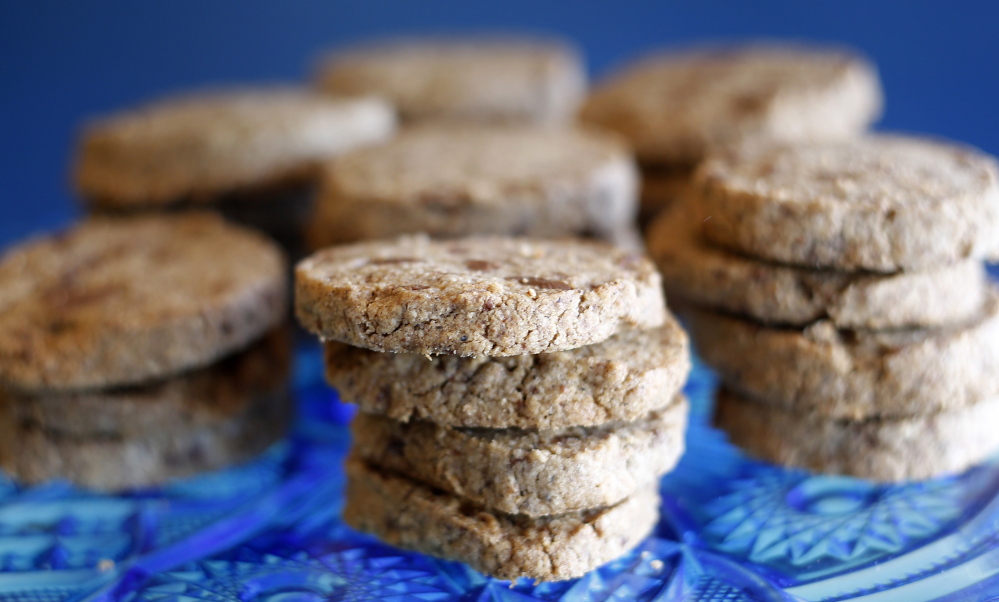The best way for a home baker to give any one of a number of the new local flours (or revived, old-fashioned ones, as the case may be) a test drive is to make a simple batch of pancakes, Amber Lambke says.
As co-founder of Maine Grains, a mill established three years ago to process local wheat, rye and oats into interesting whole-grain flours; the Maine Grain Alliance’s executive director; and a recreational baker herself, Lambke is well-positioned to hand out that kind of advice.
With pancakes, the overhead is low and the time investment trivial. But the inherent chemistry of the recipe is still in play, and the ingredient list is short enough to allow both the texture and the taste of the new flour to be immediately evident.
Under those conditions, the new flour – whether it’s a whole wheat or a soft rye from Maine; a sprouted flour from Alabama touted for its health benefits; a cornmeal from Connecticut; or a gluten-free blend from Vermont – can receive a thumbs up or down from both cook and eaters in relatively short order.
If you’re up for experimenting, Lambke suggests starting with buckwheat flour. Its mildly nutty, earthy flavor is not as assertive as Japanese buckwheat flour – the grayish flour with flecks of black hull that is used to make soba noodles – and it works well in simple quick bread recipes. As the flour used in traditional French Canadian ployes, it has deep ties to Maine. It also mixes well with many other kinds of flour (see recipe below) in recipes you may already know, and it’s gluten free, should that be important to you.
Lambke points cake bakers in the direction of sifted whole-wheat flour; once the local wheat is ground, the flour gets sifted to remove the largest pieces of bran. The resulting flour produces baked goods that are lighter than with ordinary whole-wheat flour but still more nutritious than with conventional white flour. Chocolate lovers may want to try adding rye flour to their baked goods, says Lambke, because it help elevate the overall chocolatey-ness. (Standard Baking Co. has famously done so with its chocolate-rye cookie.)
An issue that arises once you start playing with local flours is how to store them properly. If your pantry is cool, dark and dry, they will hold there next to your white flour in airtight containers for about three months. But Lambke says most locally milled flours contain more oils than commercially milled ones, so to avoid their turning rancid, she advocates storing them in the refrigerator for six months or in the freezer for up to a year.
Should you want more hands-on tutelage on working with locally milled grains, the Maine Grain Alliance will be hosting the ninth annual Kneading Conference later this week in Skowhegan.
Christine Burns Rudalevige is a food writer, recipe developer and tester and cooking teacher in Brunswick. She writes about feeding her family Maine seafood at www.familyfish.net. Contact her at cburns1227@gmail.com.
BUCKWHEAT SABLES
Food and Source Editor Peggy Grodinsky raves about these cookies from Scratch Baking Co. in South Portland. Co-owner Sonja Swanberg developed the recipe to be included in the recently published “Real Maine Food: 100 Plates from Fishermen, Farmers, Pie Champs, and Clam Shacks” by Ben Conniff and Luke Holden.
Almond flour is another name for almond meal, which is simply almonds ground into flour. Because these cookies have no gluten, they are quite crumbly. (Sables are classic French cookies; the word means “sandy” in French.) In light of our recent column on pecans being the most sustainable nut for Mainers, we tested the sables with pecan flour. The verdict at the offices of the Maine Sunday Telegram? “Deee-licious.”
Makes 2 dozen cookies
1 cup (2 sticks) unsalted butter, room temperature
½ cup sugar
2 egg yolks
1½ cups buckwheat flour
½ cup almond flour
½ to ¾ teaspoon salt (depending on your salt preference)
1 cup chopped milk chocolate
Cream the butter and sugar in an electric stand mixer with the paddle attachment until smooth, stopping to scrape the sides and bottom of the bowl a few times to make sure nothing is sticking. Add the egg yolks one at a time, beating after each to incorporate.
Add the buckwheat flour, almond flour, salt and chocolate and pulse mix on low, just to bring the dough together, again scraping the bowl to make sure everything is evenly combined. When all the flour has been absorbed and the mixture just starts to come together, the dough should look like wet clumpy sand.
Turn the dough out onto a sheet of parchment paper and lightly press into a log shape. Then, using the paper to help you, roll the dough to make a uniform log approximately 2 inches in diameter.
Chill the dough until firm (about 2 hours). You can also freeze the dough, just let it warm up a bit before you slice it so it doesn’t crumble.
When you are ready to bake, preheat the oven to 350 degrees F. Slice the log into ½-inch rounds and place on a baking sheet lined with parchment paper, leaving about 1 inch between the cookies. Bake 20 to 25 minutes, rotating once until the cookies are lightly golden brown around the edges.
Send questions/comments to the editors.



Comments are no longer available on this story